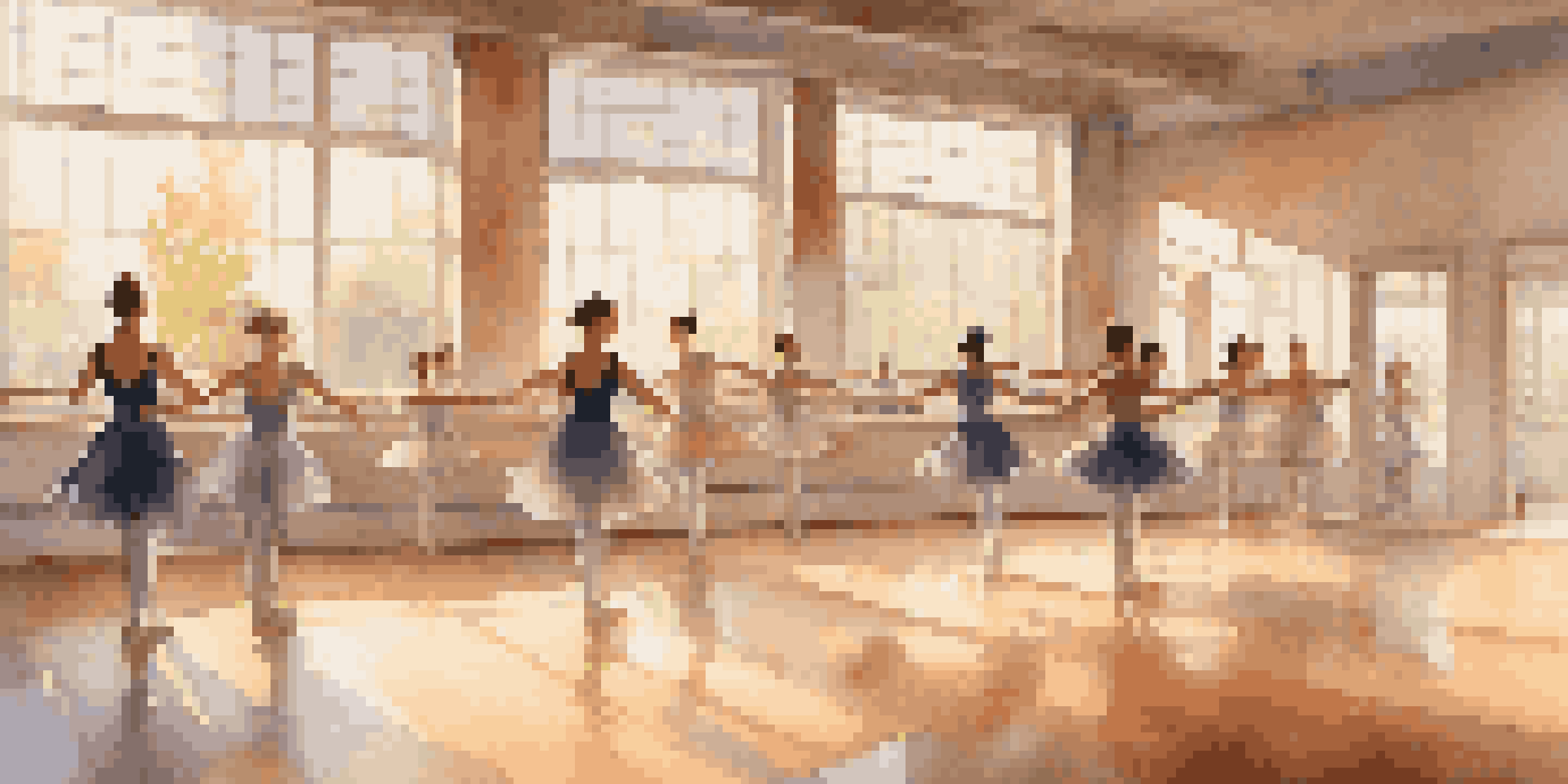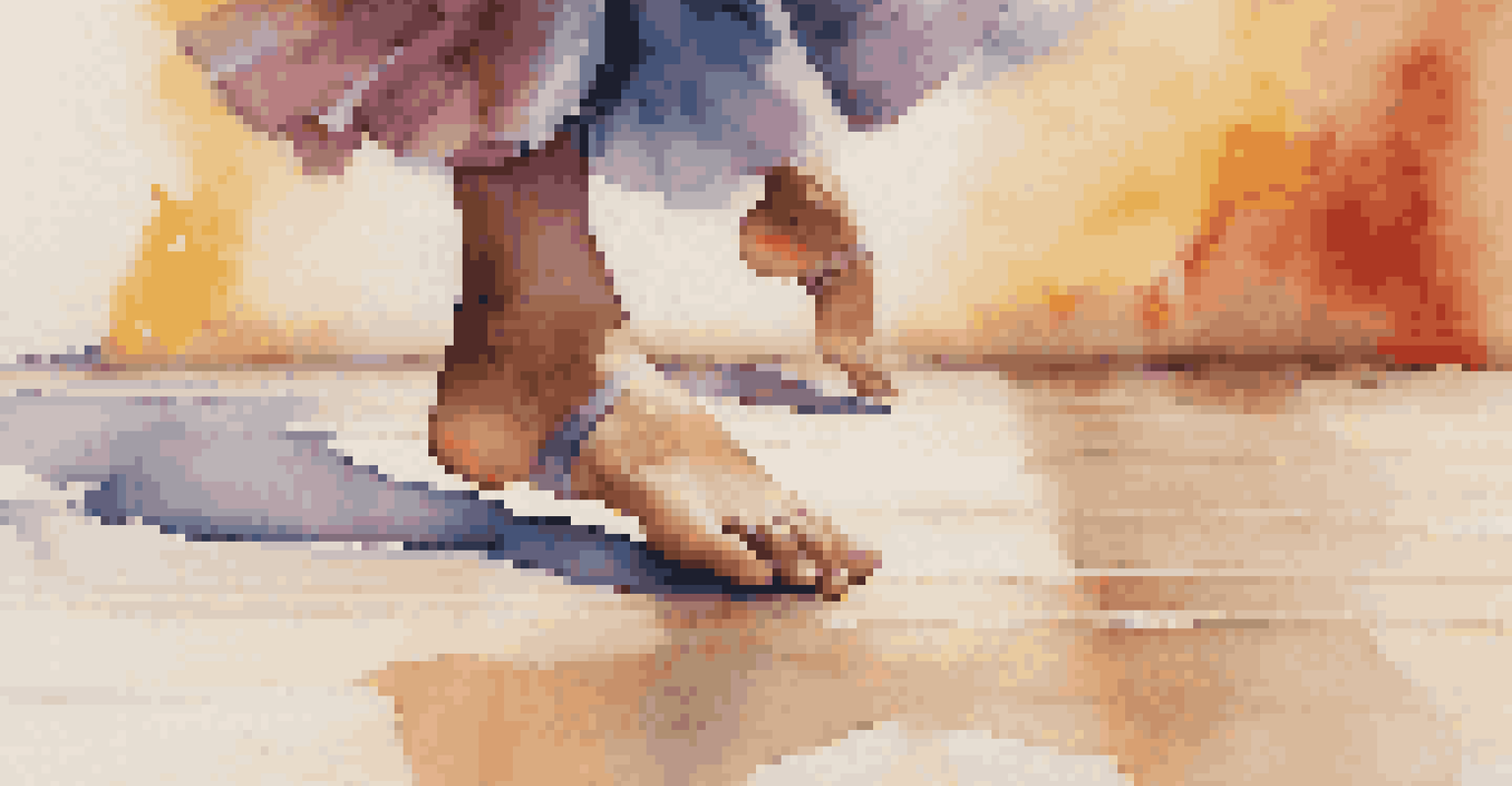Dance and Chronic Pain Management: Movement for Relief

Understanding Chronic Pain and Its Impact on Life
Chronic pain affects millions, often leading to physical limitations and emotional distress. It can stem from various conditions, such as arthritis or fibromyalgia, making daily activities feel daunting. This pain doesn’t just linger; it can alter one's lifestyle, relationships, and overall well-being.
Dance is the hidden language of the soul.
Living with chronic pain can lead to feelings of isolation and frustration. Many individuals become less active, fearing that movement may worsen their condition. However, understanding that movement can play a pivotal role in pain management is essential for breaking this cycle.
By recognizing the relationship between movement and pain relief, individuals can explore new avenues for managing their symptoms. This is where dance comes into play, providing a unique approach that combines physical activity with emotional expression.
The Therapeutic Benefits of Dance for Pain Relief
Dance is not merely an art form; it's a powerful therapeutic tool. Engaging in dance can promote physical fitness, improve flexibility, and enhance strength, all of which are crucial for individuals dealing with chronic pain. The rhythmic movements can help release endorphins, the body's natural painkillers.

Moreover, dance encourages body awareness and mindfulness, allowing individuals to reconnect with their bodies. This can be particularly beneficial for those who have lost touch with their physical selves due to pain. The act of moving to music can also provide a sense of joy and liberation, counteracting feelings of sadness or frustration.
Dance Aids Chronic Pain Relief
Engaging in dance promotes physical fitness, releases endorphins, and enhances emotional well-being, making it a powerful tool for managing chronic pain.
Additionally, dance fosters social connections as it often involves group classes or community events. This social aspect can help combat feelings of isolation, creating a supportive environment where individuals can share their experiences and learn from one another.
Types of Dance Suitable for Chronic Pain Management
When it comes to choosing a dance style, several options are particularly suitable for those managing chronic pain. Gentle forms like ballet or contemporary dance emphasize fluid movements and can be adapted to individual capabilities. Even simple stretching and movement can be incorporated into these styles.
Movement is a medicine for creating change in a person's physical, emotional, and mental states.
Additionally, styles like ballroom or social dancing promote connection and interaction, making them enjoyable and less intimidating. These dances often have slower tempos, allowing participants to move at their own pace. The focus on partner work can also enhance communication and trust among dancers.
Yoga-inspired dance classes, which blend movement with breath, can be especially beneficial. They not only provide physical relief but also promote relaxation and mental clarity. This holistic approach can significantly improve an individual’s overall quality of life.
Incorporating Dance into Your Pain Management Routine
Starting a dance practice can feel overwhelming, but it doesn’t have to be. Begin by setting small, achievable goals, such as attending one class a week or practicing at home for a few minutes each day. It’s essential to listen to your body and allow it to guide your movement.
Consider exploring online resources, such as dance videos or virtual classes, which can be done in the comfort of your home. This flexibility allows individuals to find a style they enjoy without the pressure of a formal setting. It also provides the opportunity to move at their own pace.
Community Support Through Dance
Joining dance classes fosters a sense of community and connection, helping individuals cope with chronic pain by sharing experiences and strategies.
Remember that consistency is key. The more you engage in dance, the more you can experience its benefits. Keeping a journal of your feelings and progress can help track improvements and motivate you to continue.
The Role of Music in Dance and Pain Management
Music is a powerful catalyst in the dance experience, enhancing mood and encouraging movement. Upbeat tunes can lift spirits and energize participants, while softer melodies can promote relaxation and calmness. The right music can transform a simple dance session into a joyful escape from pain.
Furthermore, the rhythm of music can help individuals find their own pace, allowing movements to feel more natural. This can reduce the fear of injury, as individuals focus more on the rhythm than on potential discomfort. Engaging with music can also ignite memories and emotions, creating a deeper connection to the movement.
Creating personalized playlists can be a fun way to enhance a dance practice. Choose songs that resonate with you emotionally or recall positive experiences, turning each session into a meaningful ritual of self-care.
Mindfulness and Dance: A Powerful Combination
Mindfulness, the practice of being fully present in the moment, pairs beautifully with dance. When dancing, individuals can focus on their movements, the music, and their breath, effectively diverting attention from chronic pain. This shift in focus can create a sense of relief and empowerment.
Incorporating mindfulness techniques, such as deep breathing or visualization, can enhance the dance experience. For example, visualizing pain as a wave that rises and falls can help individuals manage discomfort during movement. This mental imagery can transform the perception of pain, making it feel more manageable.
Mindfulness Enhances Dance Experience
Incorporating mindfulness techniques during dance can shift focus away from pain, providing both physical and emotional relief.
Practicing mindfulness through dance not only provides physical benefits but also promotes emotional well-being. It can help individuals develop a more positive outlook on their bodies and their experiences with pain.
Finding Community in Dance for Chronic Pain Support
One of the most significant benefits of dance is the sense of community it fosters. Joining a dance class or group can introduce individuals to others who share similar experiences, creating a supportive network. This camaraderie can be incredibly validating for those dealing with chronic pain.
Many communities now offer dance programs specifically designed for people with chronic pain or disabilities. These inclusive settings not only provide a safe space to move but also encourage participants to share their stories and strategies for managing pain. This exchange can lead to valuable insights and friendships.

Social support plays a crucial role in coping with chronic pain, and dance can be a wonderful entry point for building these relationships. It reminds individuals that they are not alone in their journey and that there is strength in shared experiences.